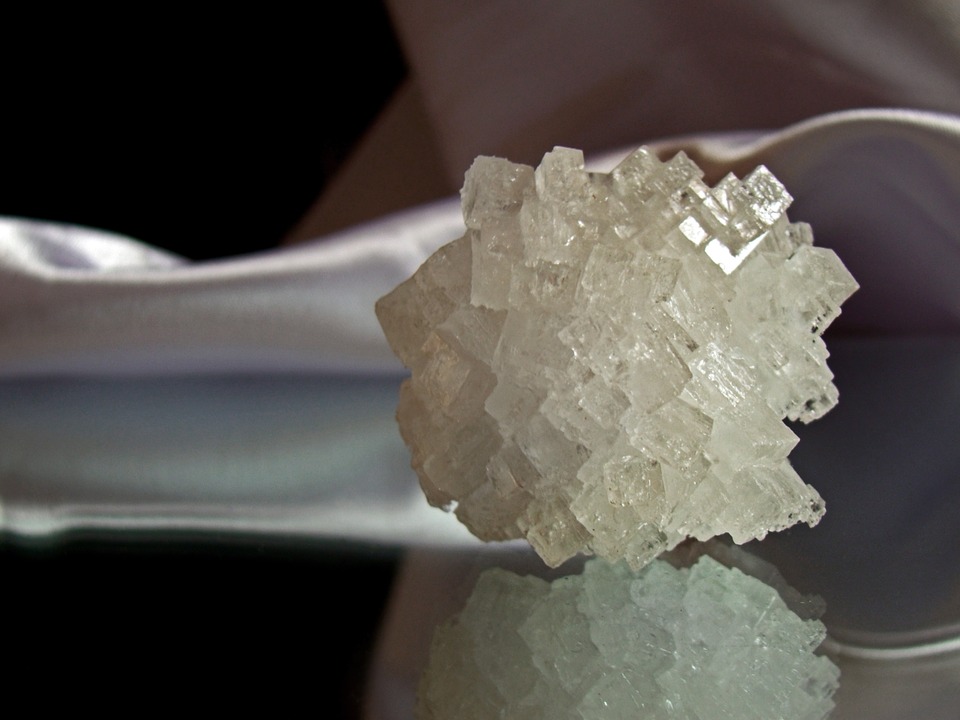The three most unfoodlike substances that we consume are salt, white sugar and oil. They are, respectively, a pure mineral, a pure carbohydrate and a pure fat. Let´s begin by looking at the first two, without cultural, nutritional, or gustatory biases -as if we were examining them for the very first time.
Both salt and sugar are crystals. They precipitate out of liquids (seawater, cane juice) and form themselves into evenly ordered molecules with smooth planar surfaces. They have, therefore, a most distinct characteristic: They are form created out of formlessness. And it is a highly ordered form at that: crystalline substances are composed of row after row of similar, clearly shaped molecules.
Crystals are fascinating phenomena. Though they are minerals, and thereby lifelss, they can nevertheless grow. In fact, they are regularly “grown” in laboratories for various scientific purposes. An entire science, crystallography, is dedicated to the study of the properties of crystals. Without crystals, the field of electronics, semiconductors, and transistors could not exist.
How do crystals grow? They emerge, as Aphrodite from the sea, out of a highly saturated solution. As the liquid cools or evaporates, the substance dissolved in it precipitates into a solid form of smooth surfaces. If the crystallization process in nature is slow and steady, the resulting crystals will be large and beautiful -gemstones, diamonds, quartz. If the process is hastened and has to endure abrupt changes in temperature, the crystals will be smaller, sometimes even impossible to discern with the naked eye. Yet, regardless of size, there will still be a precise order and repetitiveness to the molecular arrangement of a crystalline substance.
Sugar and salt, the edible crystals, have both at one time been considered precious luxuries. Salt cakes were used as money in early Rome, where soldiers earned a “salary” *. In Persia around 600 A.D. sugar was considered “a rare and precious miracle drug” a sedative dispensed with great caution. Both substances have been intimately involved in the development of European trade and commerce with faraway lands-as, in fact, have been the spices of India.
Today both sugar and salt, precious substances though they once were, have swung from their original exalted place to the opposite. They are cheap and plentiful, available to all, and during this century they have been consumed in ever-increasing quantities. As we know that quantity changes the quality of things, it comes as no surprise that the erstwhile magic medicines have of late turned to poison.
Today both sugar and salt, precious substances though they once were, have swung from their original exalted place to the opposite. They are cheap and plentiful, available to all, and during this century they have been consumed in ever-increasing quantities. As we know that quantity changes the quality of things, it comes as no surprise that the erstwhile magic medicines have of late turned to poison.
* From salarium, “money given to Roman soldiers to buy salt”
AnneMarie Colbin – Food and Healing







